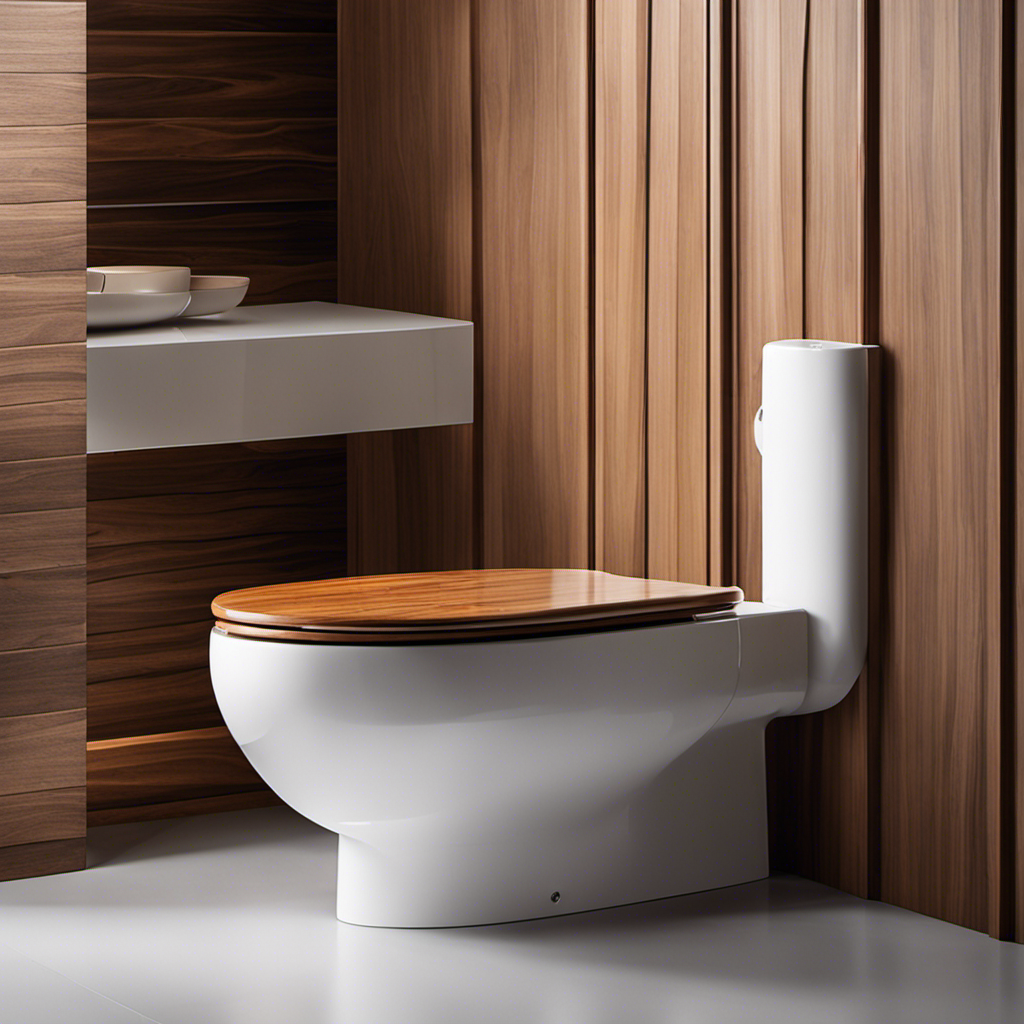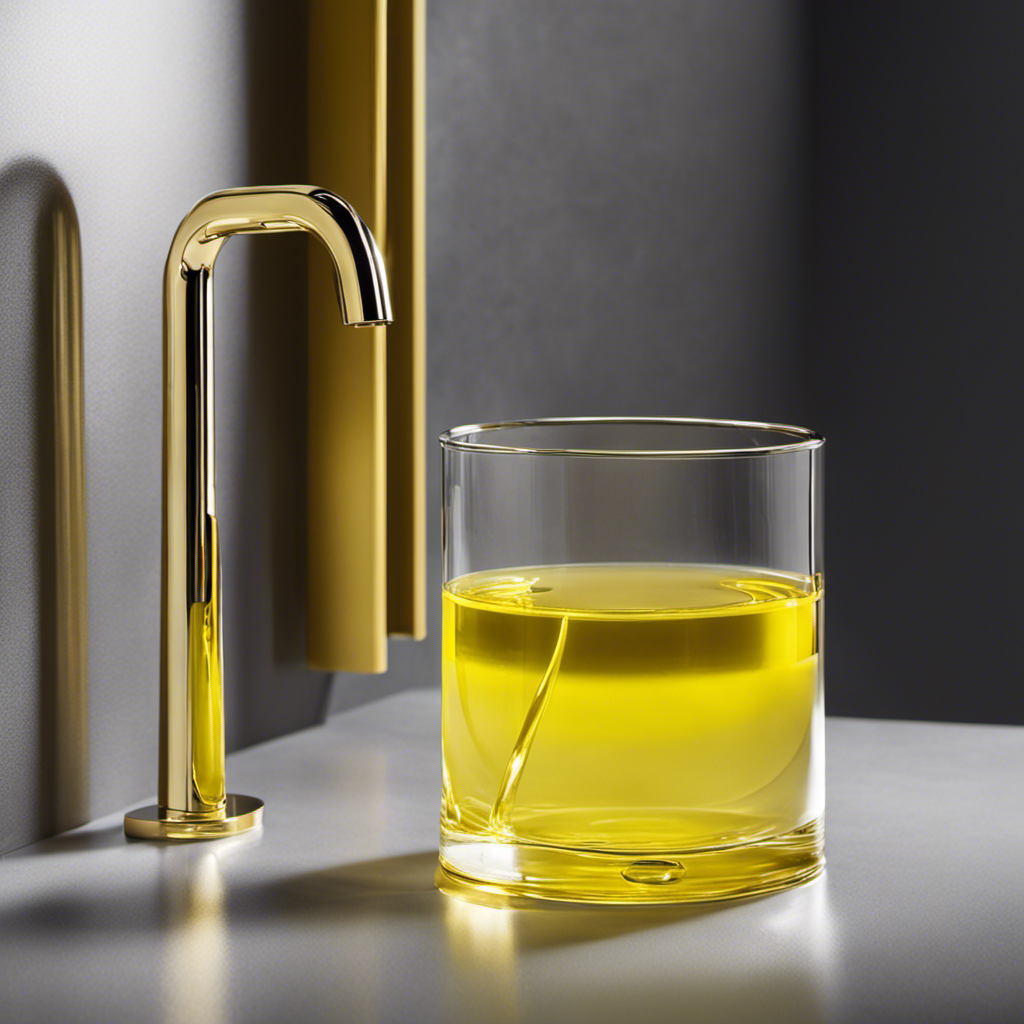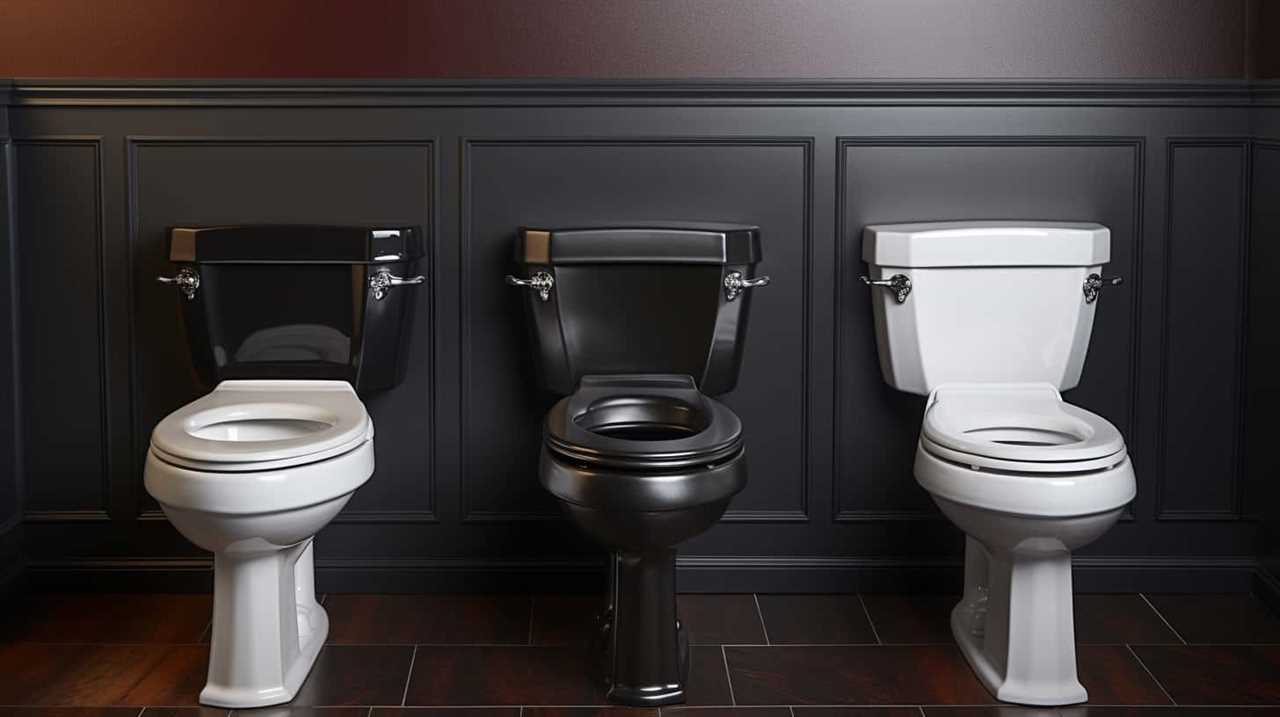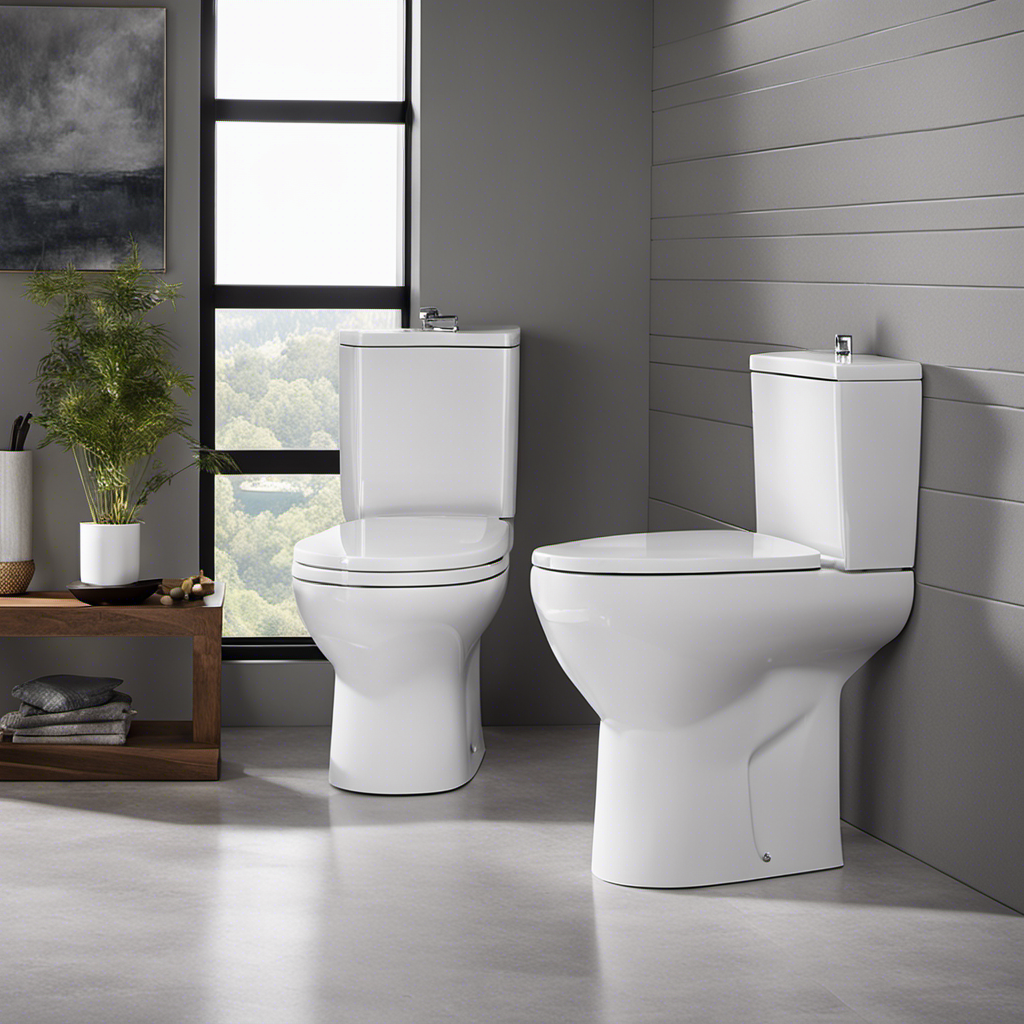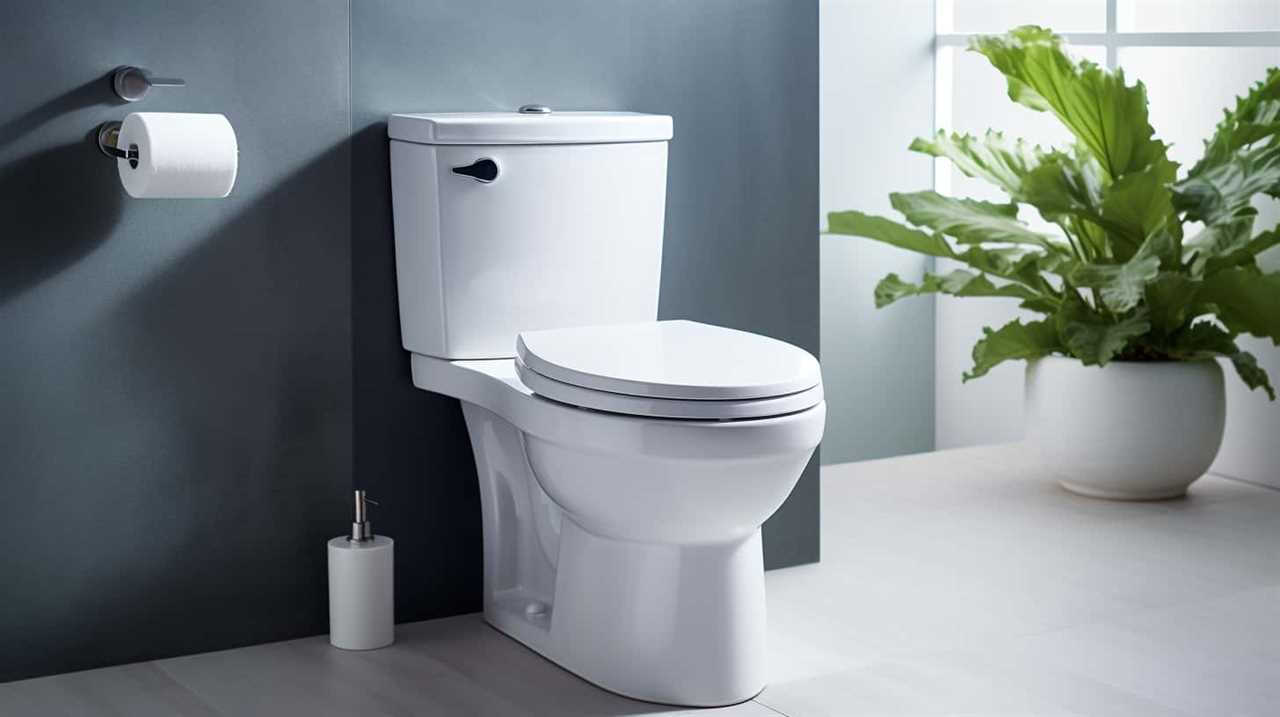So, you’re in the market for a new toilet seat, huh? Well, let me tell you, the choice between wood and plastic is not as simple as it seems.
Sure, plastic seats are lightweight and easy to clean, but they lack that touch of elegance and can discolor over time.
On the other hand, wooden seats add style to your bathroom and retain warmth better, but they can be a bit more high-maintenance.
It all comes down to your personal preferences and priorities. Let’s dive into the nitty-gritty of wood vs. plastic toilet seats and help you choose the best one for your throne.
Key Takeaways
- Wooden toilet seats are sturdier and can add style to the bathroom decor, especially in bathrooms with a touch of wood.
- Plastic toilet seats tend to last longer and are more durable than wooden seats.
- Wooden seats retain warmth better than plastic seats, making them a wise choice for those who want a toilet seat that doesn’t get cold.
- Plastic seats are easier to clean and maintain compared to wooden seats.
Material Comparison
I personally find it helpful to compare the materials when deciding between a wooden or plastic toilet seat.
Let’s start with the advantages and disadvantages of each.
Plastic toilet seats have the advantage of being more affordable compared to wooden ones. They also come in a wide variety of styles and colors, making it easier to find one that matches your bathroom decor. Plastic seats are also durable, scratch-resistant, and easy to clean, which is great for households with large families. They are also compatible with stronger cleaning chemicals, ensuring effective sanitation.
On the other hand, plastic seats may lack elegance and can discolor over time. They can also be cold and uncomfortable, especially during colder months, and are more prone to cracking or breaking.
When it comes to cost comparison, plastic seats are generally cheaper than wooden ones, making them a more budget-friendly option.
Durability Factors
Durability is an important factor to consider when deciding on a toilet seat material. When it comes to durability, wooden toilet seats have their advantages. They are sturdy and can withstand daily use. However, plastic toilet seats tend to last longer compared to wooden seats.
Wood can degrade over time, especially in high-moisture bathrooms. Wooden seats made from medium-density fiberboard can also discolor and have paint come off. Additionally, wooden seats can separate due to their construction with four wood pieces.
On the other hand, plastic seats are more resistant to wear and tear and are less likely to crack or break. Therefore, while wooden seats may offer style and elegance, plastic seats have the upper hand in terms of durability.
Warmth and Comfort
When considering the warmth and comfort of a toilet seat, it’s important to note that wooden seats retain heat better than plastic ones. This is due to the natural insulating properties of wood. The benefits of wooden seats are evident in colder climates or during chilly winter months when sitting on a cold plastic seat can be quite uncomfortable.
Wooden seats provide a cozy and warm seating experience, making them a popular choice for those seeking added comfort in the bathroom. On the other hand, plastic seats lack this insulation and can feel cold to the touch, especially in bathrooms without heating systems. This can be a drawback for individuals who prioritize warmth and comfort.
Therefore, if you desire a toilet seat that retains heat better and provides a more comfortable experience, wooden seats are the way to go.
Cleaning and Maintenance
Cleaning and maintaining a toilet seat is easier with plastic seats due to their smooth surface, allowing for quick and convenient wiping. Plastic seats are more resistant to stains and discoloration compared to wooden seats, making them a practical choice for easy upkeep. To keep your plastic toilet seat clean and prevent discoloration, there are a few cleaning techniques you can use. First, make sure to wipe down the seat regularly with a mild cleanser and a soft cloth or sponge. Avoid using abrasive cleaners or scrub brushes as they can scratch the surface. Additionally, consider using a disinfectant spray or wipes to ensure proper sanitation. Lastly, to prevent discoloration, avoid leaving any harsh chemicals or dyes on the seat for an extended period of time. By following these cleaning techniques, you can maintain the cleanliness and appearance of your plastic toilet seat for years to come.
| Cleaning Techniques for Plastic Toilet Seats |
|---|
| Wipe regularly with a mild cleanser and a soft cloth or sponge |
| Avoid using abrasive cleaners or scrub brushes |
| Use disinfectant spray or wipes for proper sanitation |
| Avoid leaving harsh chemicals or dyes on the seat for an extended period of time |
Additional Features and Considerations
I really appreciate the variety of additional features and considerations available when selecting a toilet seat. Here are some pros and cons to consider, as well as installation tips:
-
Soft-Close Feature: Plastic seats with a soft-closing feature close softly and quietly, eliminating the loud noise of traditional toilet seats. However, wooden seats do not come with this feature and may close more forcefully, making more noise.
-
Affordability: Plastic toilet seats are generally cheaper than wooden ones, making them more budget-friendly. This is a great advantage for those on a tight budget.
-
Durability: Plastic seats tend to last longer than wooden seats, as wood can degrade over time, especially in high-moisture bathrooms. However, wooden seats made from oak or medium-density fiberboard can discolor and have paint come off.
-
Easy Installation: Plastic seats are lighter and easier to handle during installation compared to wooden seats. This makes the installation process quicker and more convenient.
Considering these pros and cons, it’s important to weigh your priorities and preferences when selecting a toilet seat.
Frequently Asked Questions
Are There Any Health Concerns Associated With Using Plastic Toilet Seats?
I’ve found that there are no significant health concerns associated with using plastic toilet seats. However, when considering hygiene factors, plastic seats can be easier to clean and maintain compared to wooden seats.
Can Wooden Toilet Seats Be Refinished or Painted if They Start to Discolor or Peel?
Yes, wooden toilet seats can be refinished or painted if they start to discolor or peel. This process involves sanding the seat, applying a new finish or paint, and allowing it to dry thoroughly before using.
How Do Plastic and Wooden Toilet Seats Compare in Terms of Noise When Closing?
Plastic toilet seats tend to make less noise when closing compared to wooden seats. They are also more durable and require less maintenance, making them a practical choice for those prioritizing toilet seat durability and maintenance.
Are There Any Eco-Friendly Alternatives to Plastic and Wooden Toilet Seats?
There are eco-friendly alternatives and sustainable options to both plastic and wooden toilet seats. These options include seats made from recycled materials, bamboo, or even biodegradable materials, providing environmentally conscious choices for your bathroom.
Can the Choice of Toilet Seat Material Affect the Overall Resale Value of a Home?
The choice of toilet seat material can impact the overall resale value of a home. A high-quality, stylish material like wood can add value and appeal to potential buyers, while a cheap plastic seat may detract from the overall impression of the bathroom.
Conclusion
After thoroughly comparing wood and plastic toilet seats, it’s clear that the choice ultimately depends on personal preferences and priorities.
If you prioritize hygiene, easy maintenance, and additional features such as soft-closing, then a plastic toilet seat is the way to go.
However, if you value a stylish and cozy bathroom decor, as well as a seat that retains warmth better, then a wooden toilet seat is the better option.
It’s important to consider the pros and cons of each material before making a decision.
